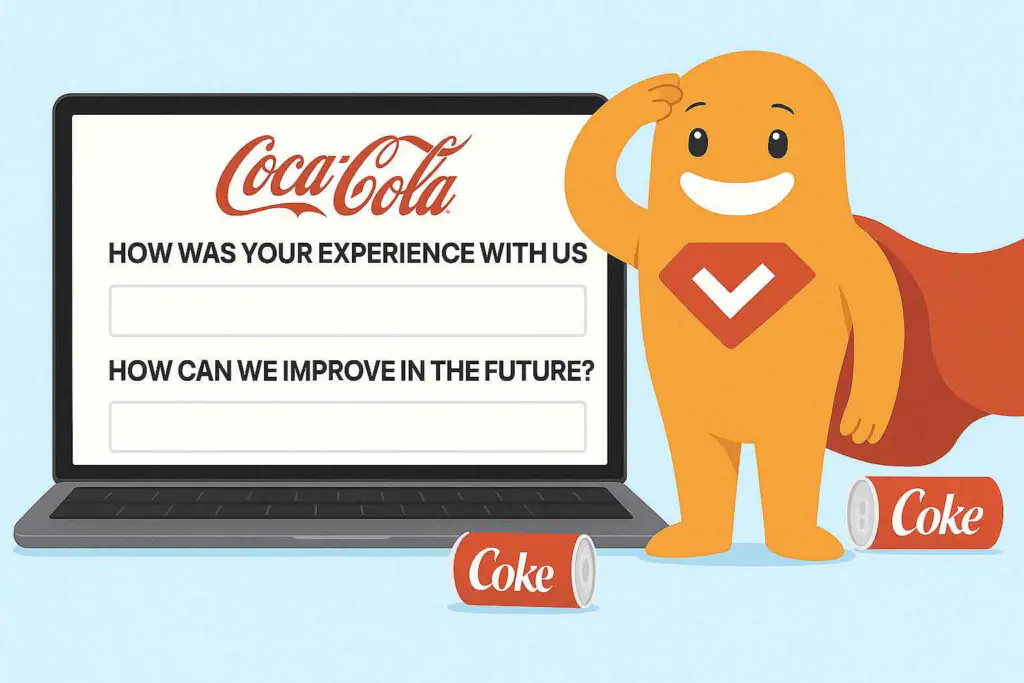Who doesn’t love pizza paydays, standing desks, nap pods, and “bring your dog to work day”? Many companies have initiated these types of perks in order to improve the employee experience, or EX. And while these are great for company culture, the employee experience involves more than just these types of incentives, especially with many people now working from home permanently due to COVID. So, let’s take a look at employee experience, its benefits, ways to improve it, and how to use surveys as part of your employee experience strategy.
Create your employee experience survey, poll, or questionnaire now!
What is Employee Experience?
According to Gallup, “The employee experience is the journey an employee takes with your organization. It includes all the interactions an employee has with your organization before, during, and after their tenure.” Therefore, every moment of an employee’s experience plays a role in how they feel about their employer’s purpose, brand, and culture. These feelings wind up impacting employee recruitment, engagement and performance, and retention. And, studies show that when organizations get employee experience right, they can achieve twice the customer satisfaction and innovation, and generate 25% higher profits, than those that don’t.
It may have taken a while, but after seeing these benefits, many organizations are now putting a great deal of effort into the employee experience. According to a survey by the National Business Group, large employers across the country are spending an average of $3.6 Million on employee wellness programs. In fact, the shift to recognizing the employee experience has even led to the emergence of entire roles and departments dedicated to employee experience!
Importance of Employee Experience
Employee experience has a major impact on other aspects of an organization. Recognizing this influence, nearly 80% of executives rate employee experience as very important or important. Here are some areas, as previously mentioned, impacted by employee experience.
Recruiting
No one wants to work in a toxic environment. That’s why job search sites like Glassdoor include company reviews. These sites allow current and previous employees to rate everything from management, pay, mobility, work/life balance, and other factors that make up the employee experience. Without a good employee experience, negative reviews could scare off potential talent, especially in a healthy job market.
Engagement & Performance
Employee engagement measures the relationship between employees and an organization. How engaged an employee is can often be reflected in how much effort (time, energy, and intellect) they’re willing to put into their work. If they’re dealing with customers, it can also impact how well they treat them, and ultimately, how the company is viewed as a whole. By improving engagement through a better employee experience, employers can improve performance and productivity.
Retention
The cost of replacing an individual employee can range from one-half to two times the employee’s annual salary. This really adds up, and today, job-hopping is not uncommon. In fact, the Society of Human Resource Management (SHRM) puts the average turnover rate for employees at around 20% with most leaving early in their tenure because of poor onboarding, an inaccurate description of duties, or a false impression of the company culture. By improving the employee experience at the start of the relationship, employers can improve retention and save money in the long run.
Profits
Last, but certainly not least, a good employee experience can greatly improve your bottom line. Another SHRM study found out of more than 250 global organizations, those that scored highest on employee experience benchmarks have four times higher average profits, two times higher average revenues, and 40% lower turnover compared to those that didn’t.
How To Improve the Employee Experience
Now that you have a better understanding of the benefits of a strong employee experience, how do you go about improving it? Here are five ways to up your EX.
1. Put On “Employee Goggles”
Business leaders spend a lot of time trying to view their company through the eyes of consumers; they should take the same approach to employee experience. By looking at the company from an employee perspective, they can gain a better understanding of what the day-to-day experience is like. This may involve employee journey mapping, design thinking, or implementing an agile methodology.
2. Listen To Employees
Business leaders frequently tell employees what they expect; however, it’s important to ask employees what they expect too. If you allow employees to offer feedback, take the time to review it and consider what they want with other members of the C-suite. You might also meet with employees in different departments at different levels for honest, one-on-one discussions.
For larger organizations, an employee focus group with a moderator can break down walls and allow employees to feed off one another for better conversation and learning. Also, be sure to conduct employee surveys at different times throughout the employee journey (more on that in the next section).
3. Focus On Worker Wellbeing
More and more companies are recognizing that workplace wellness is not just about physical health (though that’s important too). Employee wellbeing, especially now, must take a holistic approach that also includes mental, emotional, and financial wellbeing. From healthy snacks to exercise challenges, extended time-off to flexible work hours, Perkbox has some great ideas to get your wellness program going.
4. Involve Key Stakeholders
Improving employee experience is a business initiative. Therefore, companies need to include key stakeholders from various departments in order to put together a strong EX strategy. Human Resources will certainly do a lot of the heavy lifting, but other departments should be contributing input and ideas that will most benefit their employees.
5. Be Cognizant of COVID’s Impact
Gartner estimates more than 88% of organizations encouraged or mandated employees to work from home due at the height of the pandemic. It was not the way most companies or employees wanted to experiment with working from home, but many found it worked. Now, more organizations are continuing to let their employees work from home permanently.
When moving to a fully remote workplace, it’s important to keep the lines of communication open and schedule a weekly meeting; this is even more important when onboarding. Onboarding remote employees can be tricky since there is no one to guide them through the process, leading to a bad employee experience. So, be sure they have a mentor who’s available by Zoom, Slack, telephone, or email at any reasonable hour. Also, understand that working from home blurs the work/life balance significantly; it’s more of a “work/life integration.”
According to a Salesforce survey on remote workers’ employee experiences during the pandemic, 88% of workers said they need flexible work schedules to find balance, but only 38% said they’d been offered increased flexibility. Showing your team that you understand their unique work-from-home circumstances by updating schedules and responsibilities as needed will build trust and engagement, improving the employee experience. Read more: 25 Employee Survey Questions: COVID Return To Work Guidelines
4 Ways Making Surveys Part of the Employee Experience Can Benefit Your Company
1. Recruitment
This is the first chance you have to introduce your company culture and establish trust with a potential hire. When recruiting talent, ask for feedback on the application process, the interviewing process, and so on. Getting feedback at this stage is a great opportunity to improve both the process and experience of applying to work at your organization. Be sure to survey those that were offered a position and those that were not to get well-rounded feedback.
2. Onboarding
A new-hire survey, or employee onboarding survey, is a questionnaire used to gain insight into an employee’s experience during their first months on the job. With so much going on during these first months, onboarding surveys offer a systemized way to check in with them. If things appear rocky, it also provides the opportunity to meet with them one-on-one to improve their experience. This, in turn, reduces turnover potential. Finally, it provides valuable information about the new hire experience that you can use to improve the onboarding experience for future hires. Want to know some survey questions for employee onboarding experience surveys? Read more: How To Use a New Hire Survey + 40 Onboarding Questions To Ask
3. Reviewing
Ah, review time! While some reviews are simply supervisor to subordinate, today many companies use 360-degree review feedback. These plans allow everyone in the organization a chance to be heard. Most 360 reviews focus directly on skills and contributions an employee makes. They may focus on areas such as accountability, leadership, problem-solving, teamwork, and vision. Of course, these will vary depending on the person’s position.
Each person then has the opportunity to highlight some of the great work they’re seeing from teammates and management. They can also voice their concern about problematic employees or management techniques. On top of this, participants will also perform a self-assessment. This enables them to see how their personal ratings about their work and abilities compare with how others in the company view things. Read more: 360-Degree Feedback Questions For Employers + Same Performance Review
4. Exit
It’s inevitable; employees are going to leave. When they do, it’s important to conduct an employee exit interview, or exit survey, to understand why they’re leaving. They could be leaving for personal reasons, or they may be unhappy. If it’s the latter, employers can work to make adjustments that could reduce turnover in the future. For example, adjustments could be made to salary, job duties, management style, etc. You can also uncover aspects of the job employees most enjoyed. That way, you don’t lose sight of the company’s best qualities. Read more: How To Conduct Employee Exit Interviews & Questions To Ask
Conclusion
Today, especially with many employees working remotely, it’s crucial for employers to focus on the employee experience. This will improve their ability to recruit and retain talent and improve their employees’ performance and productivity. All of this means a better bottom line for you – Cha-Ching! Ready to conduct employee experience surveys, like the recruitment, onboarding, review, or exit surveys we highlighted? Get started today with our professional, responsive, and secure online surveys. It’s free to get started! Does your company have an employee experience strategy? Do you conduct employee surveys to see how you’re doing? Sound off in the comments!
Create your employee experience survey, poll, or questionnaire now!
Frequently Asked Questions (FAQs)
Gallup describes the employee experience as “the journey an employee takes with your organization. It includes all the interactions an employee has with your organization before, during, and after their tenure.” A strong employee experience improves recruitment abilities, reduces turnover, and improves employee engagement, performance, and productivity. All of this adds up to a better bottom line.
Focus on looking at the company from the perspective of employees. You may want to conduct employee journey mapping or consider implementing an agile methodology. Interviewing and surveying employees can also shed light on challenges and opportunities.
There are a number of surveys used to gauge the employee experience throughout their tenure with a company, including interview surveys, onboarding surveys, review surveys, and exit interview surveys.




